
Is the Lamborghini Temerario the greatest mid-engined super-sports car you can buy today? Is it a worthy replacement for the mighty V10-engined Huracán? Those are the questions you’re searching for answers to, right? Honestly, I don’t know. If you’ll bear with me, I’ll get to why later. First, let’s talk about the fundamentals of physics: stuff like drag squares with speed. When objects move through liquids, including air, if you double the speed, drag increases by a factor of four. If you’re reading this, Mr. Newey, you can have that one on me.
I have my own man-maths equation, which is excitement squares with cylinders. Think about it. Double the cylinder count from, say, four to eight, and the excitement increases by a factor of four at least. As Einstein would say, ‘It’s all about the physics, mate.’ So, it stands to reason that when you lose cylinders, excitement will diminish, right? For a real-world example, just look at the Ferrari 296. Are you really going to make the case that its V6 is more exciting than the mid-engined Ferraris of old, with their screaming, flat-plane-crank V8s? No, I didn’t think so. And just keep in mind flat-plane crank will you, because it might be coming up again soon.
Right, let’s get on to the Lamborghini Temerario. Just like the 296, it’s lost two cylinders relative to its predecessor, the Huracán. Bah humbug. So, according to my equation, it’s worse. It doesn’t help that the Huracán’s V10 was one of the all-time great motors: a melodic masterpiece, you might say, playing tunes throughout its rev range that would send tingles up your wotsits. In part, that was because it was naturally aspirated, so its voice was crisp and clean. Its cylinder-lite, V8 replacement in the Temerario employs forced induction, which is like a voice rendered mute by duct tape.
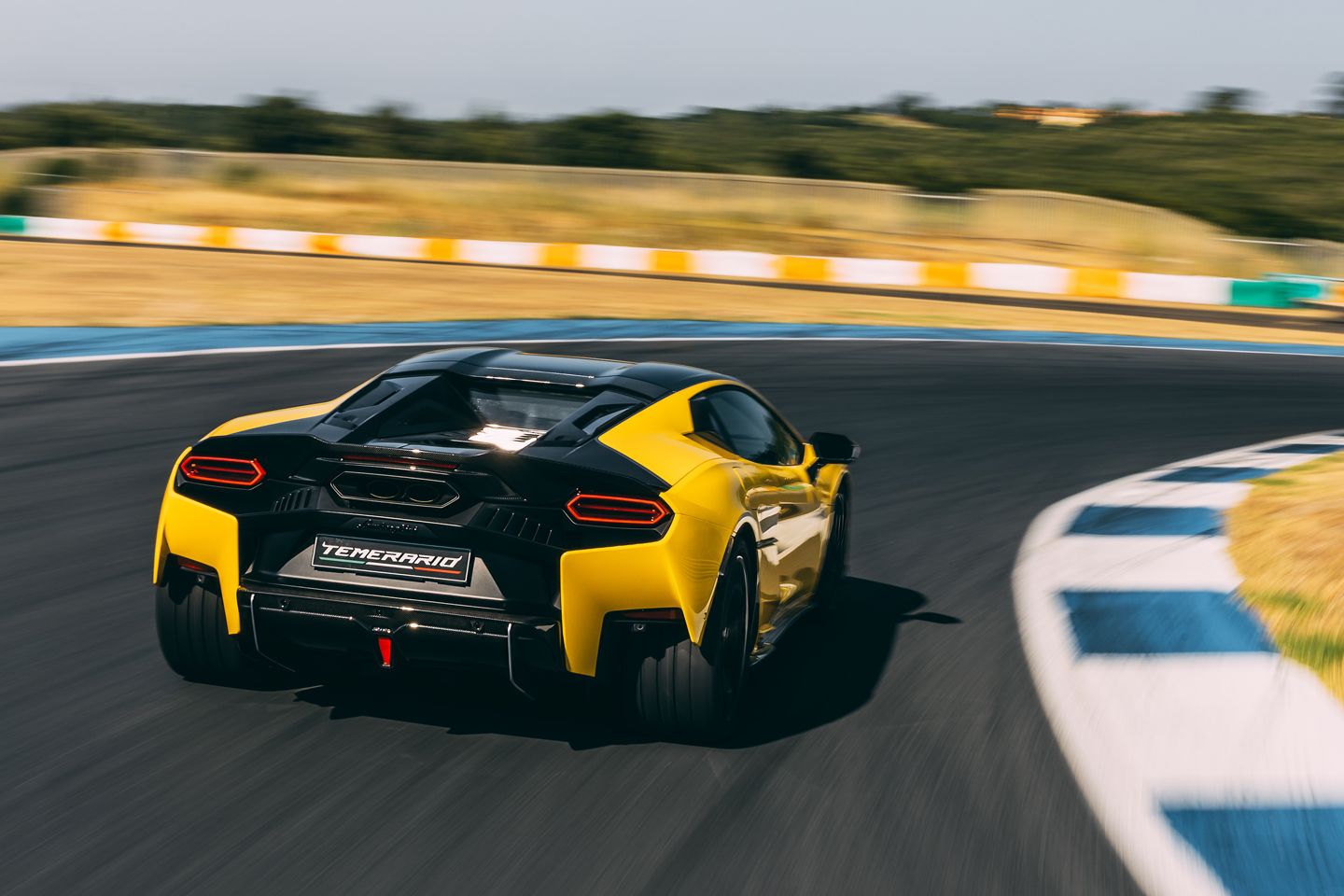
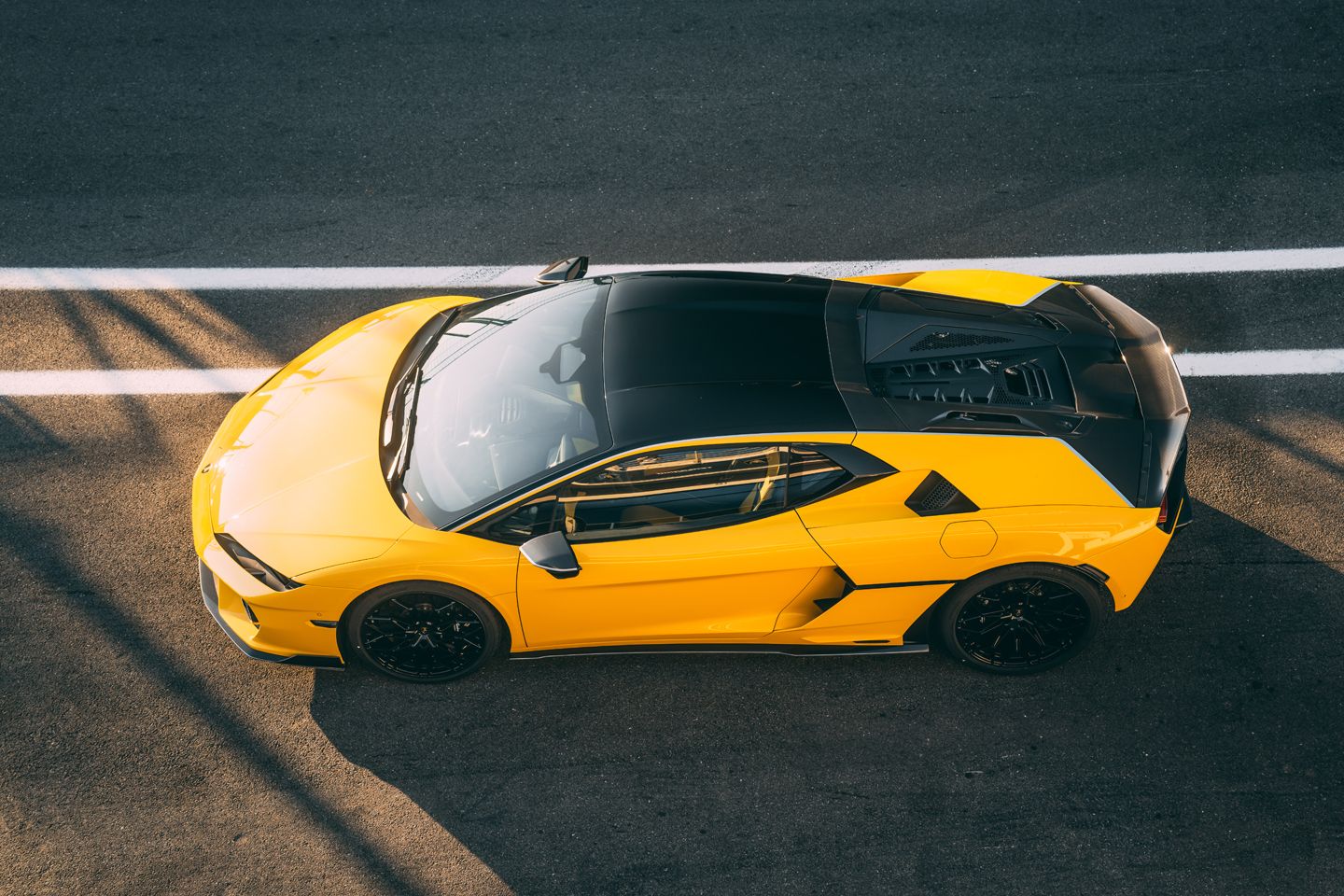
And did I mention the Temerario is also a plug-in hybrid? Well, it is – so as well as sounding rubbish, it’s ridiculously complicated. You know what this is, don’t you? It’s 1-0 to the legislators. The fat lady’s sung, without duct tape, the last rites for exciting engines in the super-sports segment. Or has she? After my drive around Estoril in Lambo’s latest, I’m not so sure. The Temerario’s engine is very different to its predecessor’s, but it’s still pretty special. And more than a bit mad to boot.
The powertrain consists of a dry-sumped, 4.0-litre, twin-turbo V8, with three axial-flow electric motors: two on the front axle and one between the engine and the transverse, eight-speed, dual-clutch gearbox. There’s nothing hugely out of the ordinary there, but this is a Lamborghini, and they like to add chilli sauce to everything. They know how good and how beloved the old V10 was, but, for various reasons, that configuration wasn’t an option. Nor was a V6, because that was too pathetic – stick that in your pipe, Ferrari. So they took the middle ground with the V8. But to add the spice, they went for a flat-plane crank. And a high rev limit.
How high? Very. A mighty 10,000rpm. And, as the ever-enthusiastic Rouven Mohr, Lamborghini’s CTO, explained, that wasn’t for performance. He said they could’ve got the performance they wanted from an engine that revved to 7,000 rpm. The other 3,000 clicks are literally about kicks and giggles, then. But that was easy to do. It required a motorsport solution to deal with valvetrain wear, which is a diamond-like carbon (DLC) coating on the followers. This is claimed to be so durable that the valve clearances are set for life, which means the Temerario’s service intervals are on par with the Huracán’s. So, whatever you or I think about the result, it’s worth noting that the engineers behind this car have, at the very least, endeavoured to make this all-new and unique powertrain entertaining. I say good on them for that.
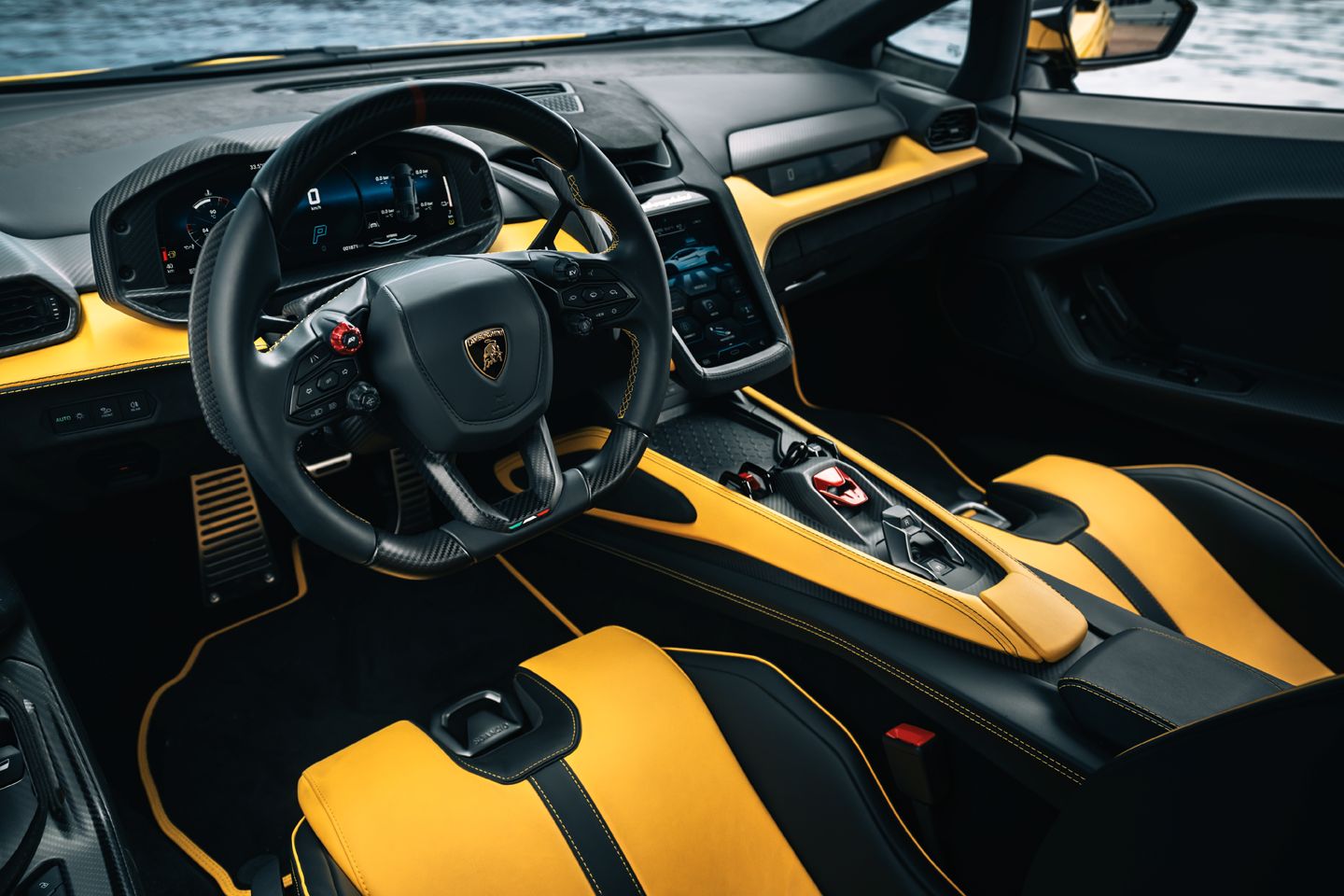
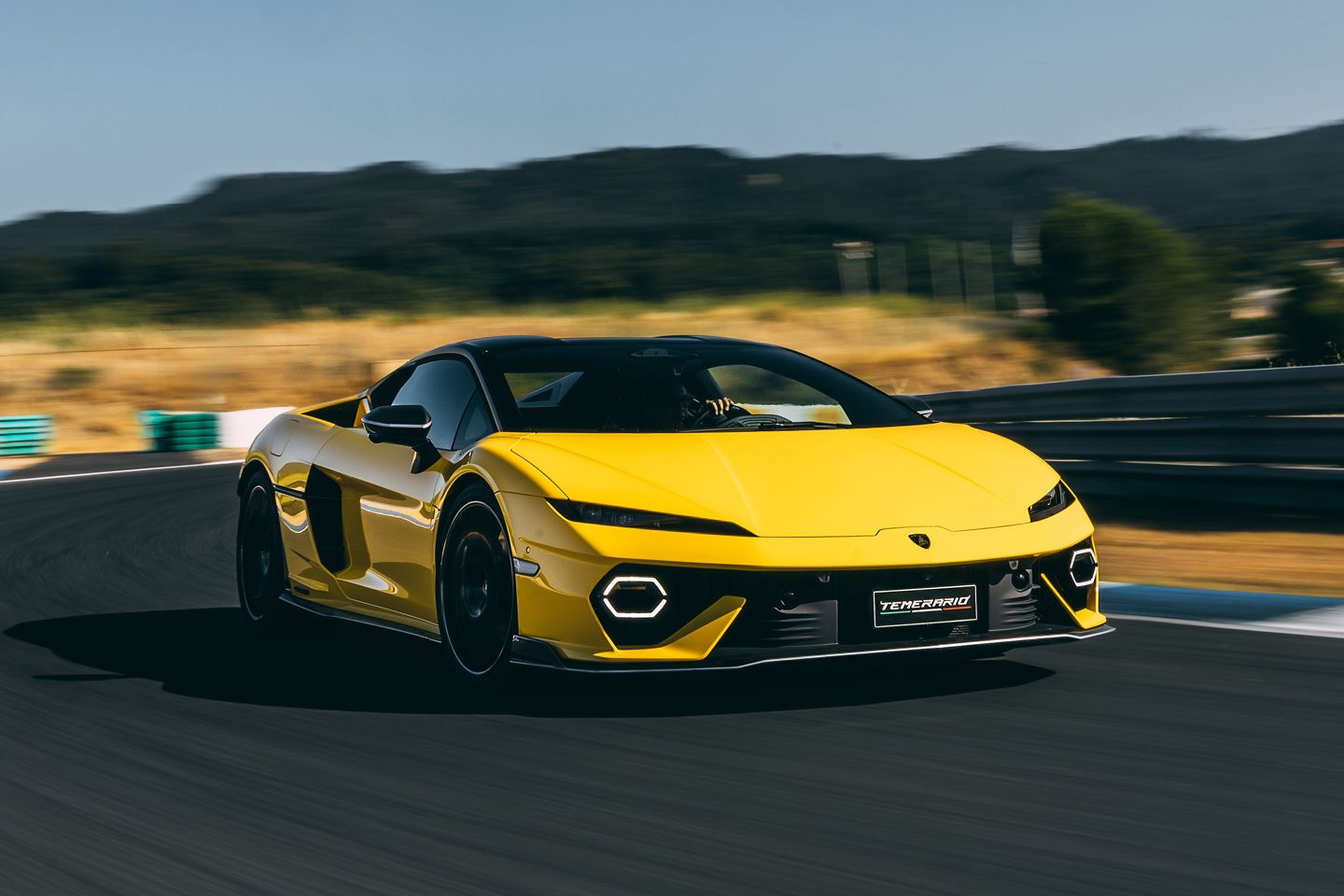
Total oomph is a ridiculous 920hp, but most of that mighty onslaught comes from the V8. Mohr said this was important because he didn’t want the Temerario running out of electrical juice and the performance waning to a whimper around a track. So he went for an 87:13 split, with the V8 delivering 800hp and the triumvirate of e-motors adding the other 120hp – and recuperating energy at up to 100kW. In essence, the e-motor on the crank is there to mitigate the lag from the HUGE IHI turbos, which, Mohr says, were the biggest off-the-shelf turbos he could find.
They’re so big that, while technically this is a hot-vee twin-turbo V8, the turbos sit above the engine because they’re too fat to nestle between the cylinder heads. And they need to be that big to provide the required boost at such maniacal revs. They do seem to do the job because peak power is right at the top end, between 9,000 and 9,750 rpm, while a gusty 538lb ft of twist is available between 4,000 and 7,000 rpm. The two front e-motors provide additional traction when needed and also allow for precision torque vectoring. The Temerario is designed to be more rear-biased and playful than the Revuelto, right up to and including its three-stage drift setting.
It looks unmistakably like a Lamborghini, which is pleasing because that means it verges on the madcap. And, to my eyes, it’s more of a visual spectacle than the 296. If I had a criticism, it’s that I prefer the looks of the Huracán because it managed to be spectacular and beautiful. The Temerario is more dramatic and functional, although I do love the open rear bodywork exposing those enormous 325/30 ZR21 rear tyres. That’s a styling nod to the early Countach, by the way, with a bit of superbike thrown in for good measure.
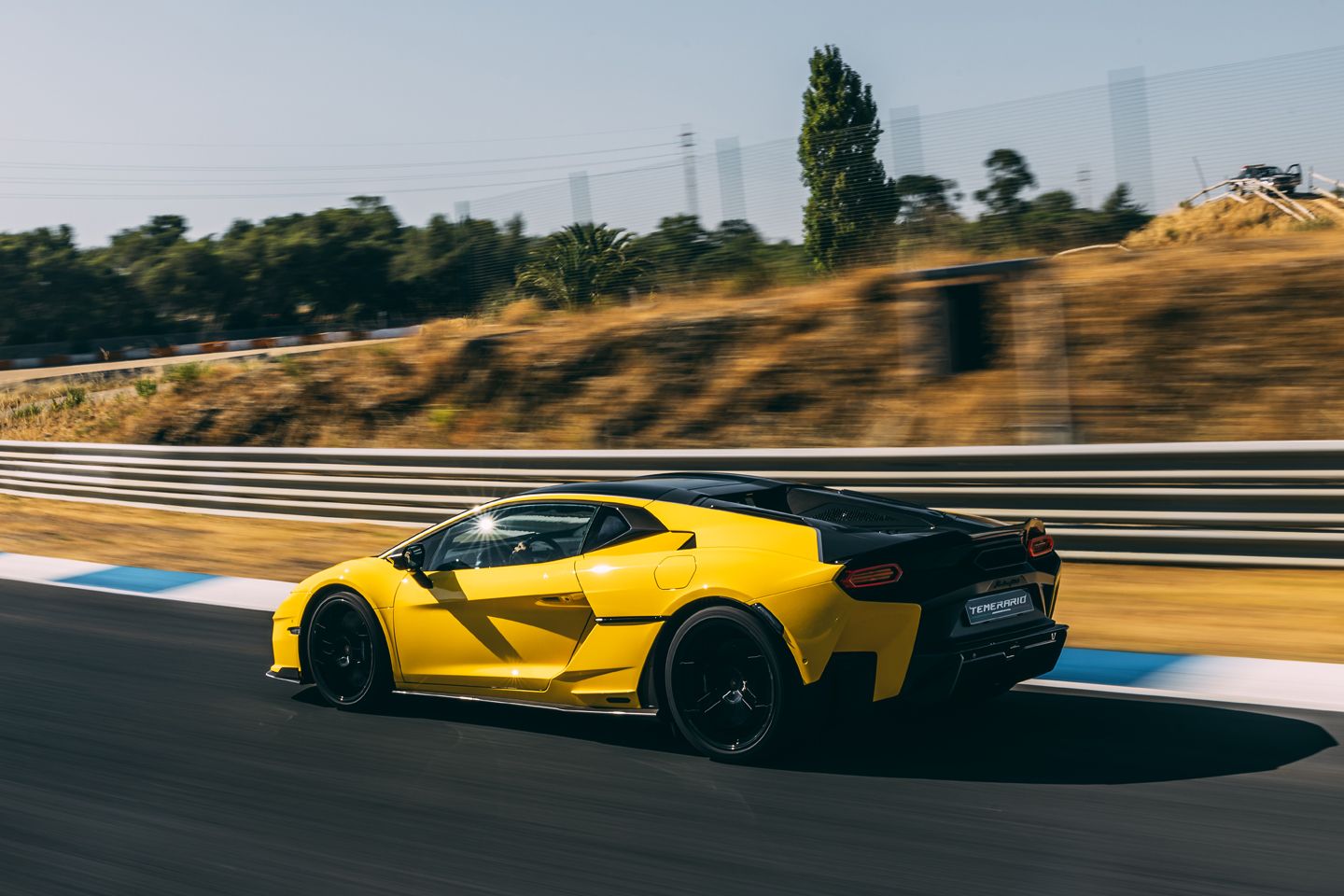
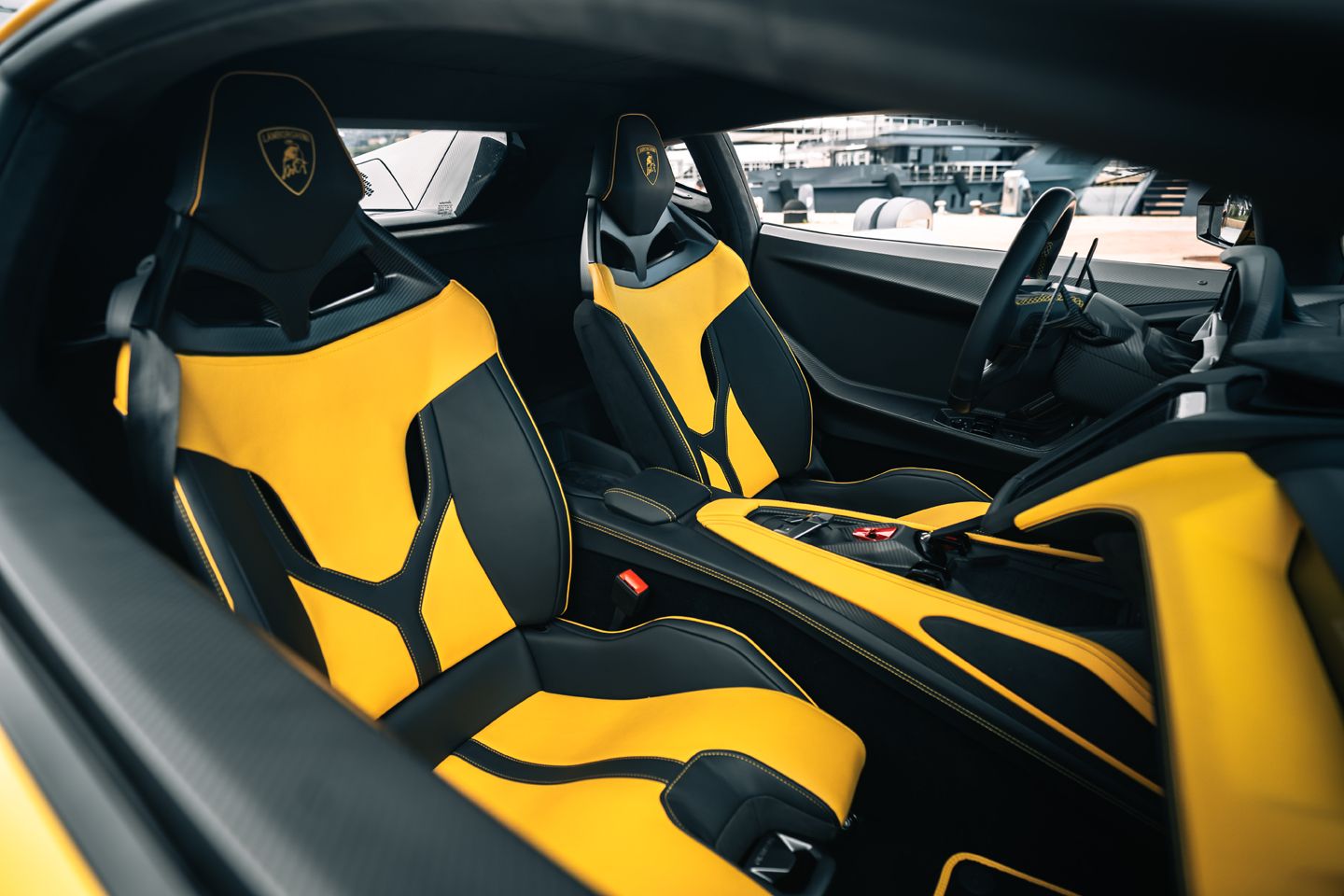
Regardless, the design is functional because it has to be, thanks to the airflow alchemy needed for cooling and downforce. The cooling demands shot up by 50 per cent compared with the Huracán, and the Temerario has 103 per cent more downforce, too. If you opt for the Alleggerita Pack, the downforce delta to its predecessor increases to 158 per cent, plus it saves 25kg, which is handy. At 1,690kg (dry), the Temerario is quite a bit heavier than the Huracán, although with the hybrid system’s 3.8 kWh battery sandwiched between the seats, in what would’ve been the transmission tunnel, the centre of gravity is lower.
There are some neat tricks in terms of both design and engineering here. See those hexagonal DRLs at the front? Well, in the middle of those, you’ll find a venturi that speeds up the airflow into the radiator behind, which means the radiator itself is smaller than it otherwise would be. And the gap below the front of the headlights channels air in multiple ways. Some of it goes over the roof, to cool the engine bay and energise the integrated rear wing, and some is separated off along the sides of the car. There, it’s split again by the door mirror mounting, creating an upper flow that feeds the engine air intakes and a lower stream feeding the radiators on the lower flanks. Underneath, the floor has multiple vortex generators to work the air hard before a massive diffuser Hoovers it out the back, sucking the Temerario to the ground. The diffuser is so effective because the shorter V8 and transverse gearbox allow it to start farther forward under the car and rise at a steeper angle.
With all this craziness, there’s evidence that Lamborghini has swallowed at least one sensible pill. The cabin is bigger than the Huracán’s, which means more head and legroom, and more storage space as well. It even comes with a decent-sized boot in the nose. The interior feels exquisitely finished and it’s also pretty easy to use. It has the obligatory screens – driver display, central infotainment screen and optional passenger display – but the interior doesn’t feel dominated by them. And then there’s the steering wheel, which is festooned with buttons, but they’re all proper ones that you press. No useless haptics here.
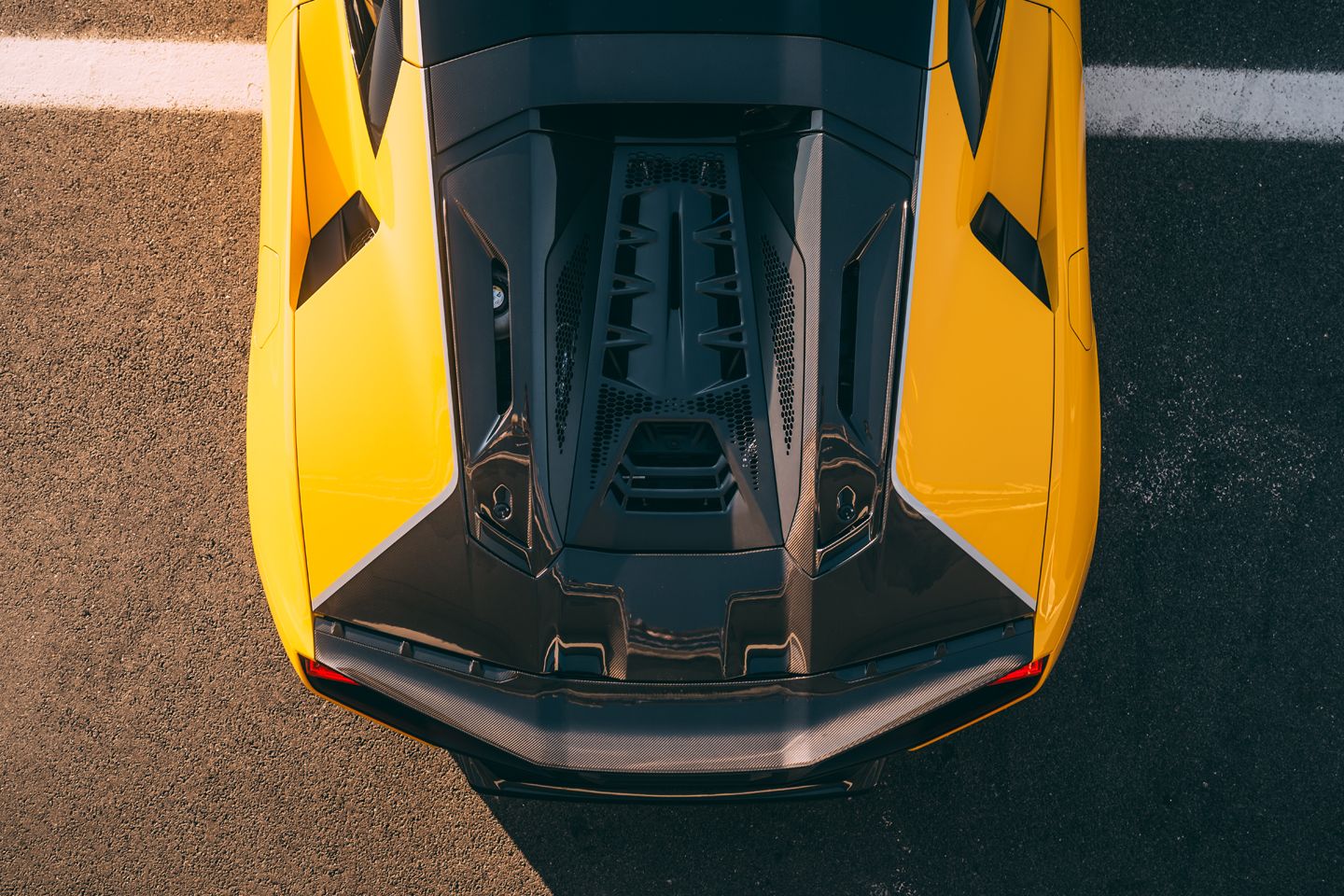

For a quick guide, the rotary controller on the left switches the driving mode between Strada, Sport and Corsa, while the one on the right deals with the powertrain. The options here toggle through a recharge mode, hybrid mode, and full-on performance mode. Oh, and I nearly forgot about the EV mode. I didn’t test this for two reasons: firstly, I only drove the car on track and, secondly, because this car was designed by enthusiasts, so the default start mode isn’t the let me sneak away without disturbing the neighbours’ electric one. It’s the SOD YOU LOT, I DRIVE A LAMBO Sport one that ignites the thunder and shakes the windows. Anyway, you won’t get far in EV mode because even the engineers reckon the range is around 5 miles.
On to the driving, then, and I immediately found a problem. My first session was in a car fitted out in, what you might term, the comfort spec: standard seats, and without the carbon-fibre-fuelled lightweight package. And I didn’t fit, at least not with a lid on. So I spent my first four laps of Estoril chasing my lead driver, who wasn’t hanging about, with my head canted over and feeling ill at ease. My second session was no better. In fact, it was worse. This next car had the Alleggerita Pack, plus the optional bucket seats and Bridgestone Potenza Race tyres. The good news is I now fitted, thanks to the bucket seats being lower and, I presume, thinner at the back because now I had enough head and legroom with the seat going back farther against the rear bulkhead.
Nevertheless, a new set of problems arrived, which were alarming. First was the cloth loop, which guides the seatbelt over your shoulder, was stopping the seatbelt from retracting. I found myself heading out on track with the seatbelt flopping loosely around my torso. And on the pit straight there was a massive vibration – and I do mean massive. It was almost certainly pick-up on the tyre, but, combined with the useless seatbelt, I wasn’t exactly concentrating on the finer details of the driving experience. So it was all down to my third and final session, and, thankfully, this was a lot better. Still in the Alleggerita Pack-equipped car, but this time with the seatbelt hugging me like a favourite aunt and no tyre pick-up rattling my eyeballs.
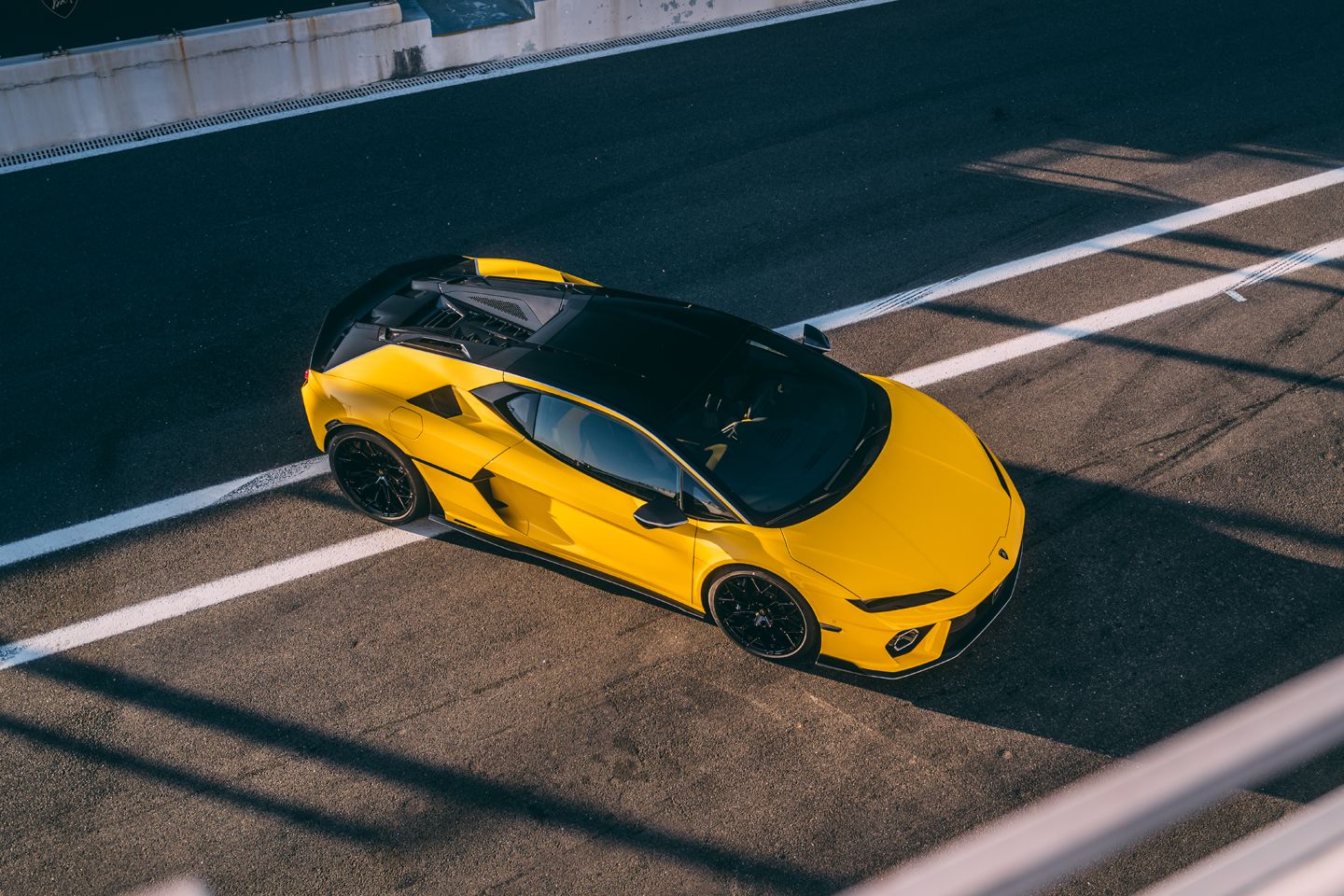
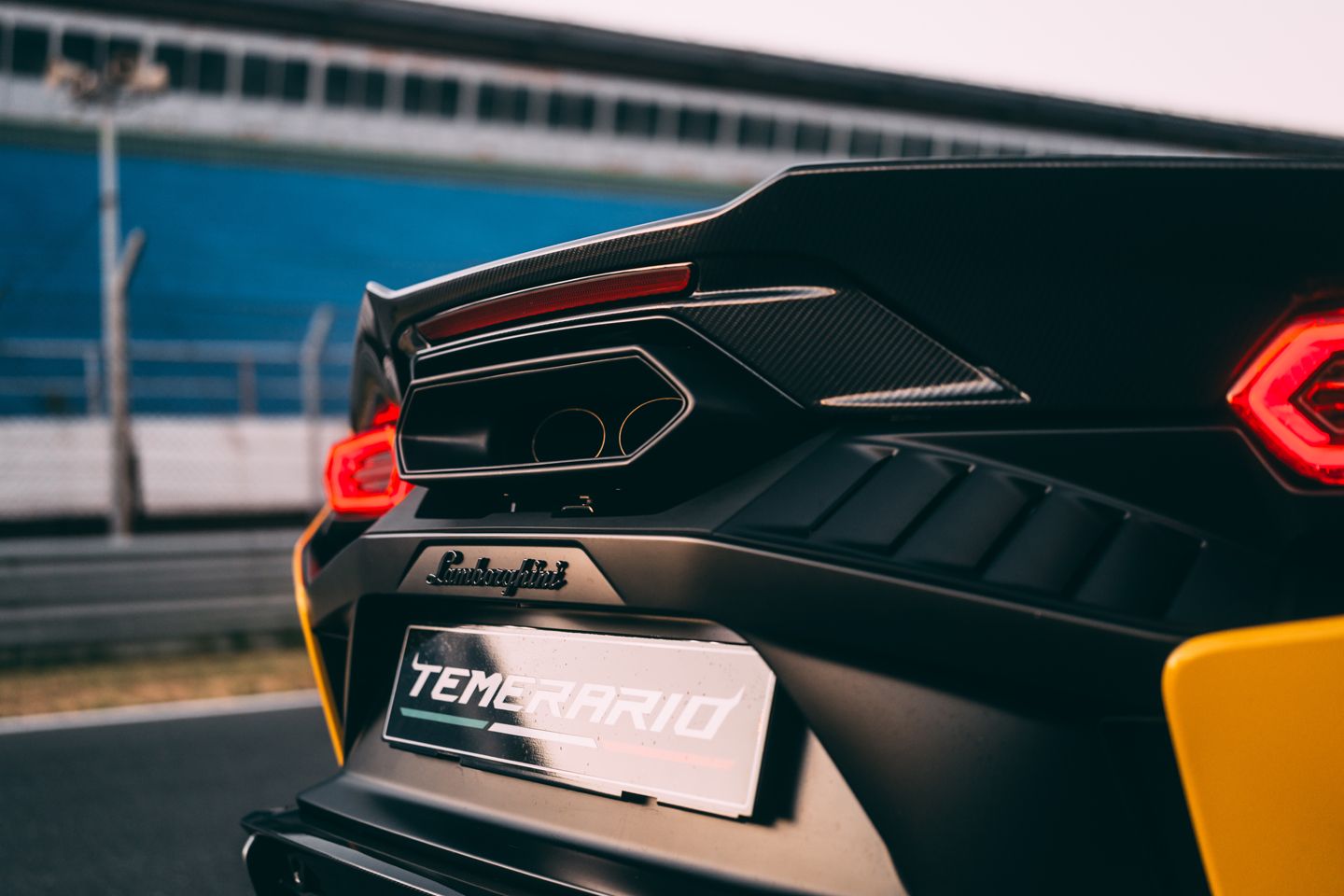
And the reason I was so alarmed about the vibration and the seatbelt issue was because this car is fast. I mean, proper, banzai fast. My, my, apple pie, it’s quite off the scale. Let me put it into context for you. I watched a video on YouTube a while back, which was Michael Schumacher commentating on his lap around Estoril in his 1991 Benetton Ford. He said, and I quote, ‘At the end of the pit straight we’re approaching 320kph.’ Well, I can tell you that the Temerario was at 300kph with me driving, without the time to max my entry onto the pit straight or my braking at the end of it. A better exit out of the Parabolica Ayrton Senna, which leads onto the pit straight, and braver braking at the end of it, and this entry-level Lambo would be nudging 320kph, too. So that’s 200mph in old money. That’s what 920hp gets you, folks. But it’s not only the terminal velocity but how it gets there that makes the engineering chit-chat come to life.
I’ll come to the noise in a wee bit, I promise, but regardless of that, this engine is a gem. Truly. It’s a masterpiece of drivability. The electric motors make the throttle response instant but not overwhelming, and thanks to some superb calibration, there’s no step-change into the next dimension of boost. That just feeds in seamlessly, until you realise that you’re building speed at an alarming rate. But here’s the thing: it does that even without using all the revs, such is the amount of boost and the reserves of torque.
You see, during those earlier runs, when I was distracted by doing 200 mph without a seatbelt while thinking a wheel might fall off, I was changing up when my ears told me to. Like I would in a normal car. However, the Temerario isn’t a normal car, is it? Instead of using all ten grand, I was changing up at piffling seven or eight thousand. This wasn’t just me, either. Pretty much every journo I spoke to – and Mohr himself, who designed this automotive hand grenade – said it took them a while to calibrate to its insanity. And when you do, it gets to 10,000 rpm without dawdling, even in fifth. It’s like no turbocharged engine I’ve ever experienced that’s for sure. If it wasn’t for the outright force it discharges, this could be a high-revving, naturally aspirated, flat-plane V8 in a Ferrari from yesteryear, such is the sublime way it revs.
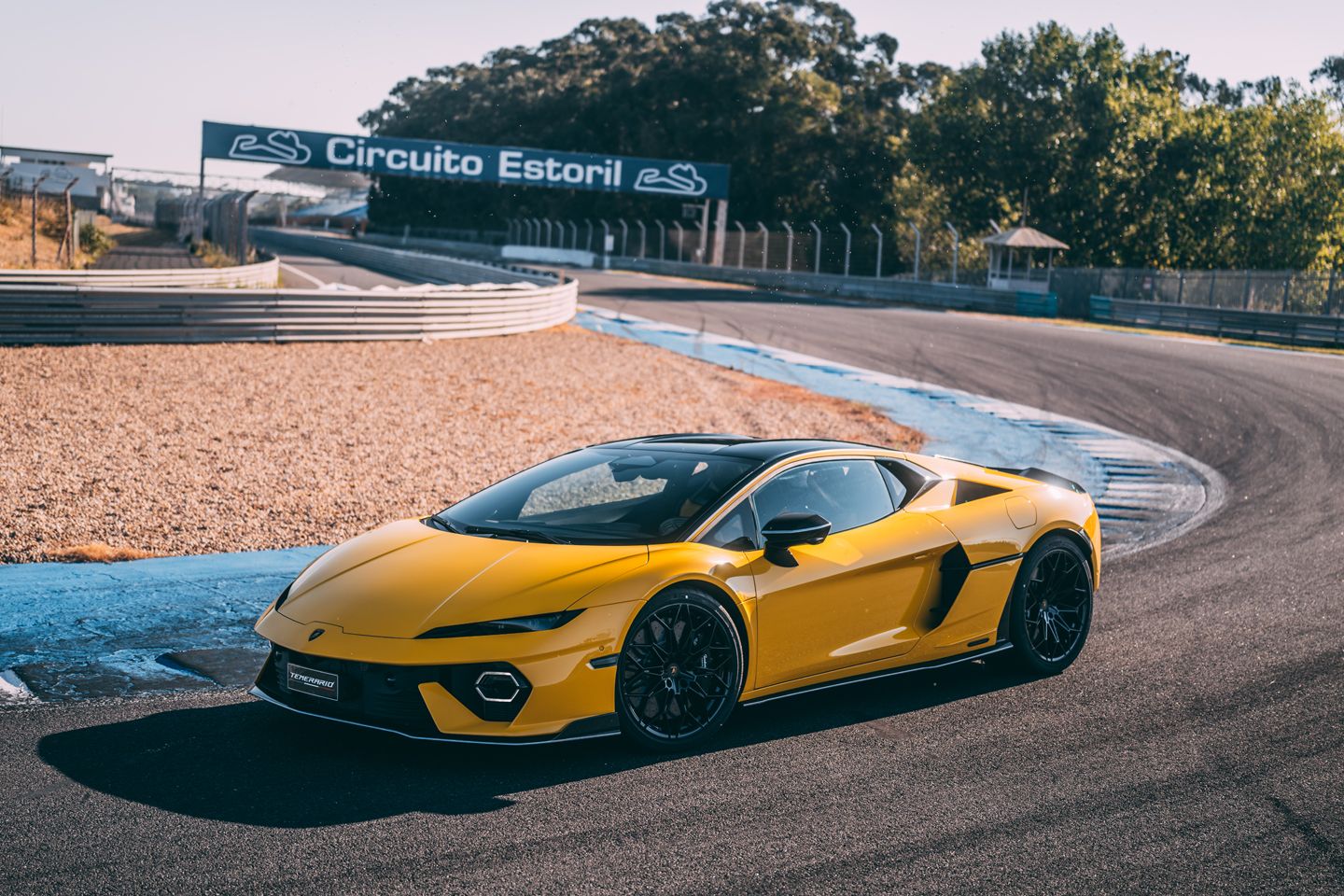
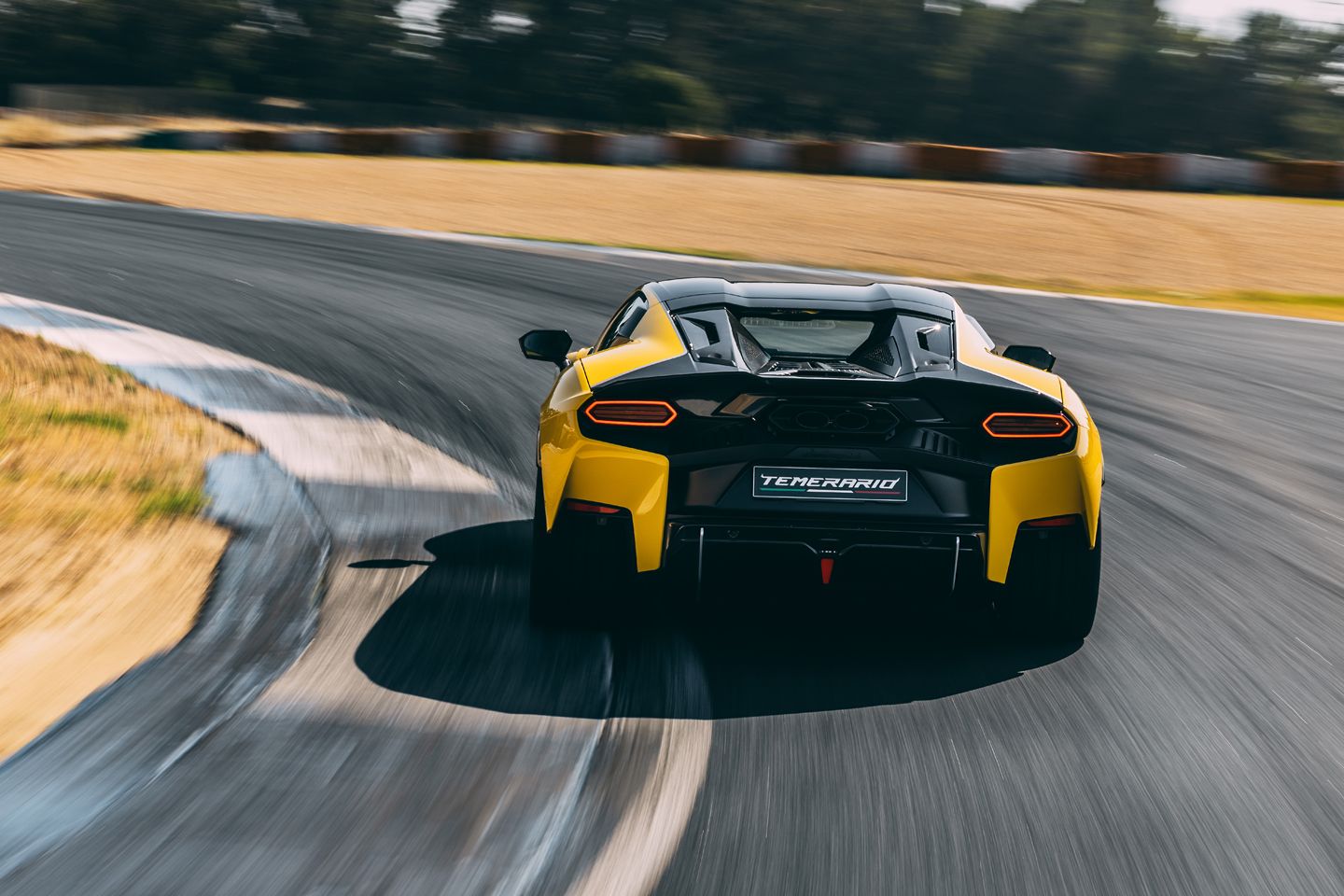
Okay, so the noise. I know you all want to know about the noise. Well, I couldn’t hear it. Not properly, anyway, because I wasn’t allowed to drive the Temerario without a lid. That means I never got to hear it raw. Even so, I can tell you it’s loud and has some je ne sais quoi, but it won’t be for everyone. The old V10 was Pavarotti with pistons: rich in tone and melody. This new V8 is Slash on speed: unhinged, boisterous, technical and marvellously frenetic. Sort of mesmerising, if you will. Yes, I miss the old V10 dearly, but because I can hold two thoughts in my head at the same time, I’m not fibbing when I tell you that I think I love this V8, too. If you’ve ever been in a 360, 430, or 458 at full chat and thought phwoar, you’ll probably love it, too.
Of course, the engine is the bit we were all worried about, but what about the rest of it? Is that any good? Yes, to a point. The carbon ceramic brakes, with 10-piston monoblock calipers at the front clamping 410mm discs, are beyond reproach. They have feel, they have power, and they stop you repeatedly from nigh-on 200mph without grumbling. The gearbox is also good. Not PDK good, but quick and good enough, with engineered-in harshness to the changes for added drama. What I didn’t enjoy on the track were the standard Bridgestone Potenza Sport tyres. You can feel the tread blocks taking the sting out of the turn in and they allow the back end too much freedom to move under braking. On the road, I’m sure they’ll be just fine, but around Estoril, I much preferred the Potenza Race tyres. Both tyres, by the way, have been created specifically for the Temerario.
On track-oriented tyres, the front turns more immediately, but it’s a bit like the engine: it takes a moment or two to realise you’re not using all it’s got. They muster so much grip in the low-speed corners, you see, but grip is not limitless, of course. You can certainly feel the understeer building through the longer corners, like the Parabolica. And this is where another gripe arose. I like the speed of the steering and I like the heft that builds up as you turn the wheel, but it’s missing some dexterity for me. Those little sensations from the track’s surface, and the feeling of the wheel lightening up in your hands just as the understeer begins, aren’t quite loud enough. By the same token, I wish the bucket seats were trimmed in Alcantara rather than leather and gripped me tighter. That way, I’d get a quicker sense of the rear rotating. It’s all little details, but, for me, it’s what separates the Temerario from the Porsche GT3 RS, or even the 296 GTB as it goes.
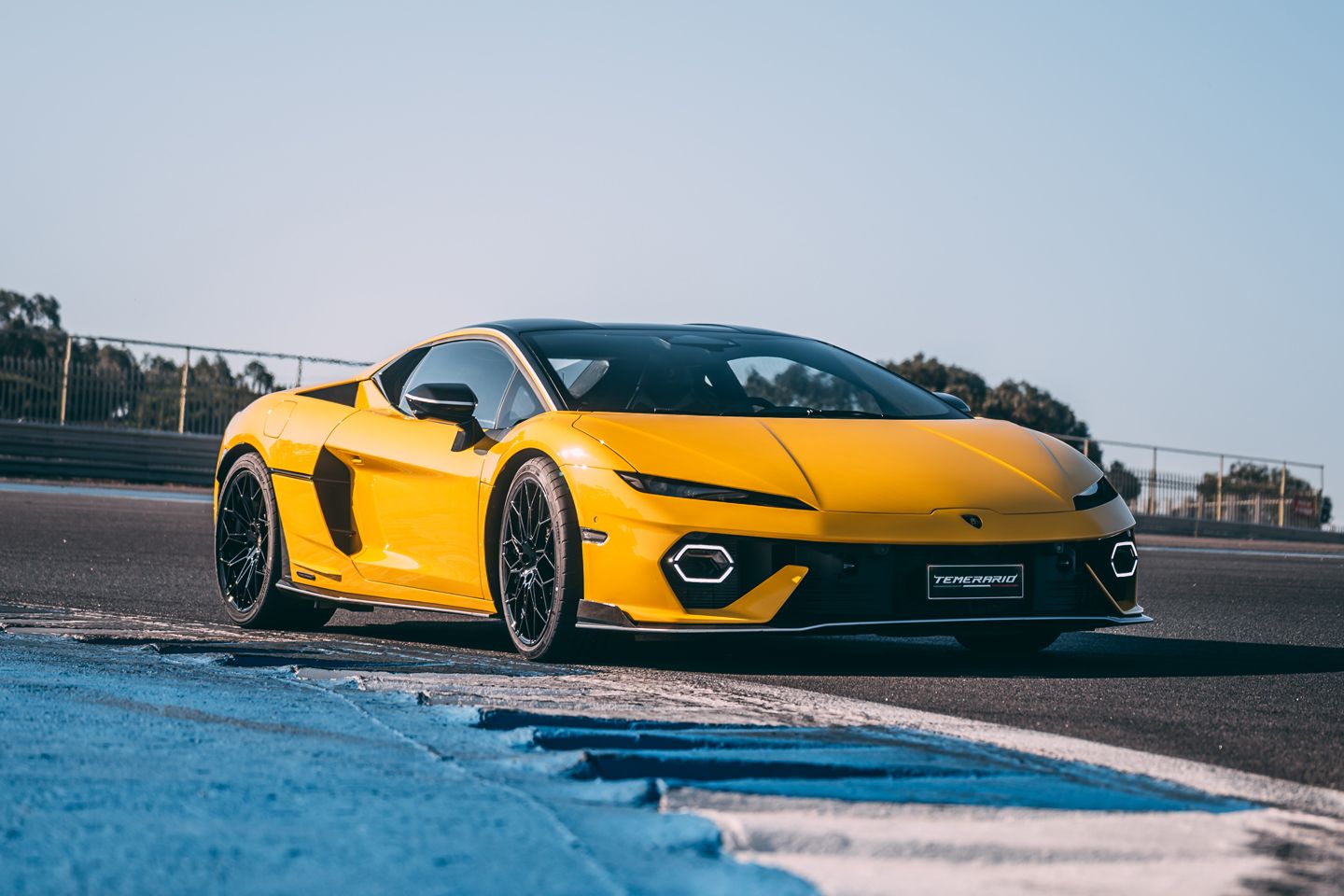
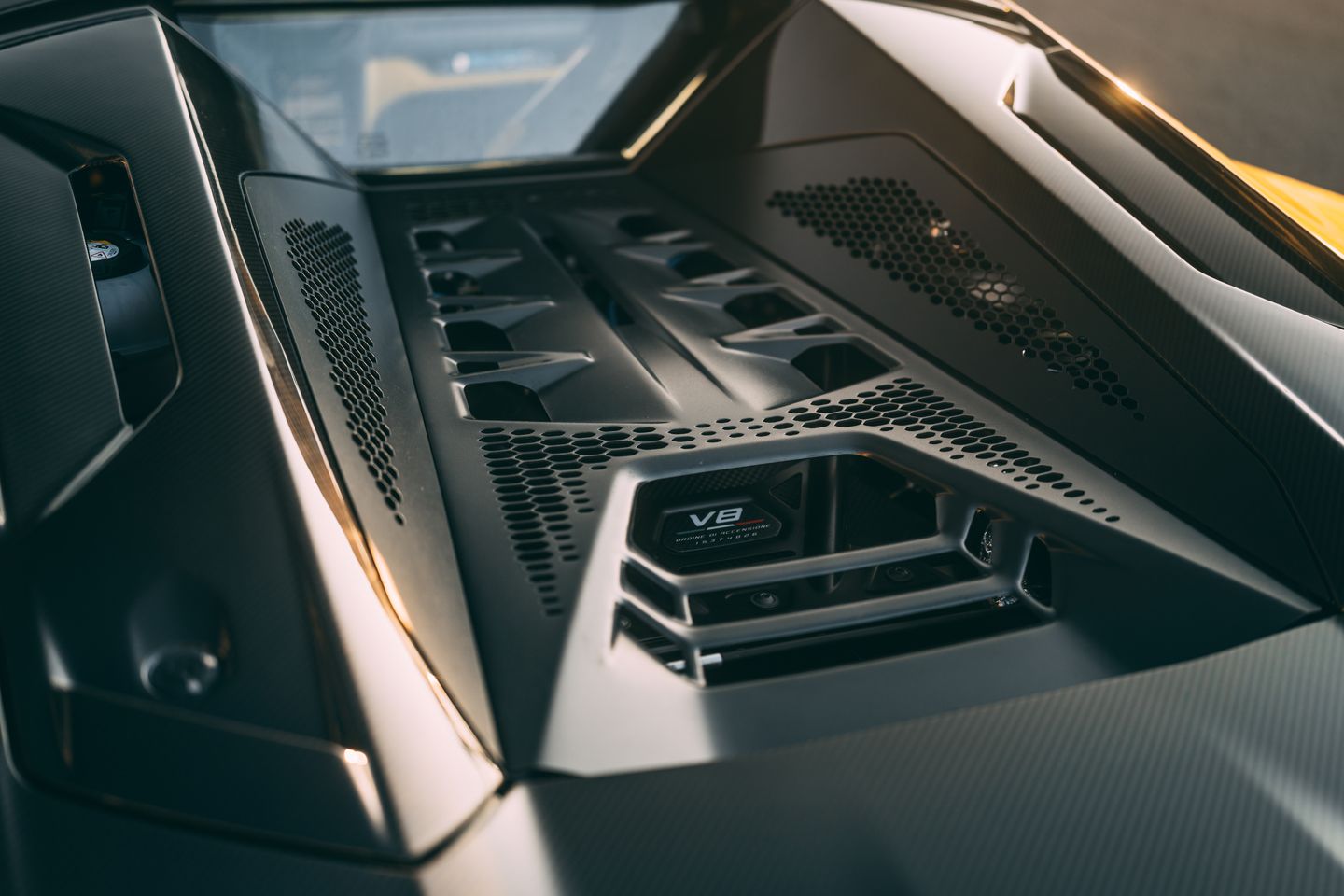
The good news is: it does rotate, and quite a lot in Sport mode. That’s the mode for those who want to have fun. It loosens the ESP’s reins and uses the e-axle at the front to get the rear moving around more easily. As I found with the 296, it’s bonkers that you can jump in a car with so much power and just get straight on with the act of taking liberties. It’s rapid but not difficult to drive. Corsa, on the other hand, is more focused. In the raciest mode, it’ll still slide on the exit of corners, but it’s no longer playing the fool. And that more stable platform gives you the consistency to focus on being neater and tidier, and, hopefully, quicker, too.
Is the Temerario the quickest mid-engined super-sports car you can buy? Probably not. Even Mohr basically says as much, because chasing the last few tenths around a lap wasn’t his brief. The Bridgestone engineers backed this up. They said they weren’t asked to focus on peak performance for the Potenza Race tyre, but consistent tyre performance and longevity, so owners could enjoy their track days for longer. Mohr wanted this car to be quick but also fun to drive, which, by and large, I’d say he and his team have achieved. Especially when you activate the drift mode, which is all about fun – especially when you’re not paying for the tyres. Again, the enthusiast in Mohr comes out when he explained the calibration to me: ‘We wanted drift mode to help the driver to, let’s say, initiate the drift, but the driver still has to make all the right inputs, as they would without this system, to control the drift and stop the car spinning.’ In other words, it’ll help you to look like a hero, but you’ll still end up on YouTube looking like a numpty if you’re a ham-fisted fool.
I like that approach. Playing with the Termerario all day on track was, no doubt about it, fun – and not in a PlayStation way. You still have to know how to get the best out of it, and then it’ll reward you with a smile. Or a quick lap time, just maybe not the quickest. And the engine? Well, it’s not a V10, it’s a flat-plane crank V8, so it’s gruff, racey, and churns vibrations into your spine. But that’s not bad, is it? The wonderful old V10 was, undoubtedly, the best engine in the super-sports segment, but I think this V8 will take that crown for different reasons. It’s tested my man-maths equation for cylinder vs excitement, and I’m not sure I believe that drag squares with speed anymore, either. That said, I’d like to hear the engine in the raw, sans helmet, to be absolutely definitive about just how amazing it sounds. In terms of performance and drivability, it ticks all the boxes, though.
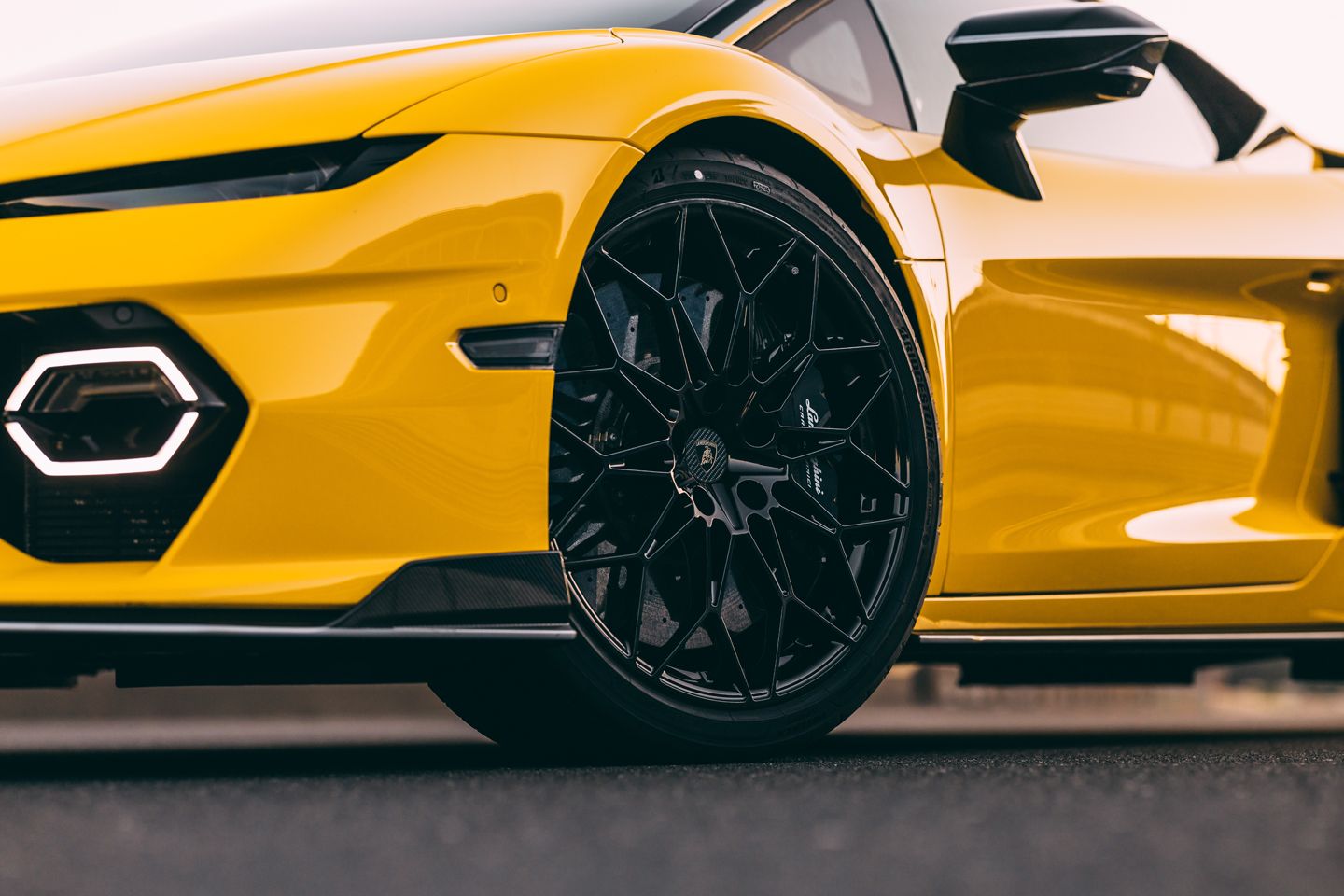

Yet, throughout this launch, and ever since, something has been niggling away in my noggin. I’ve no doubt the intention to build something fun and exciting was there from the off – the enthusiasm from all involved wasn’t fake – and, out on track, it’s all of that and more. But the Temerario, even with the lightweight pack and track-focused tyres, isn’t a true track car. It’s not a GT3 RS. Mostly, it’s a road car, and that’s my niggle: is a car that’s nudging 1,000hp just too fast for the road?
There was lots of talk from everyone at Lamborghini about 10,000rpm being exciting, and, by gum, it is. But when I asked, over and over, ‘How often will you get to max that screaming, crazy ceiling on the road?’ I never got a satisfactory answer. I worry that the simple truth is: rarely. What are the chances of being able to use, legally, in any country other than Germany, 10,000rpm in anything other than first gear? In which case, what’s the point? How fun is that going to be on the road? And that’s the bit I don’t know, because I went all the way to Portugal and wasn’t allowed to drive it on the road. So I really don’t know. We’ll just have to wait and see.
SPECIFICATION | LAMBORGHINI TEMERARIO
Engine: 3995cc V8, twin-turbo, plus three axial-flow motors
Transmission: 8-speed dual-clutch auto, all-wheel drive
Power (hp): 800 @ 9,000-9,750rpm (920hp in total)
Torque (lb ft): 538 @ 4,000-7000rpm (in total)
0-62mph: 2.7 seconds
Top speed: 213mph
Weight: 1,690kg (dry)
CO2: 272g/km
MPG: 25.2
Price: £260,035

